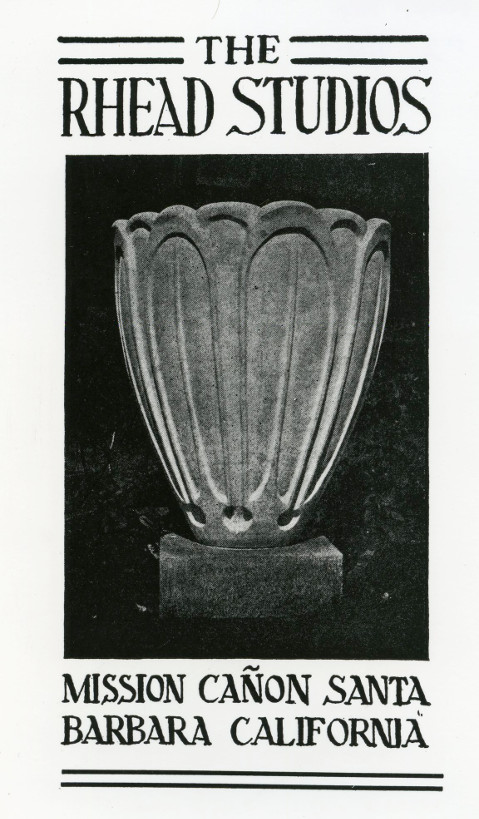Santa Barbara’s Arts and Crafts Potter Frederick Rhead
Originator of Fiesta Ware Had Studio on Tornoe Road
Santa Barbara was home to a significant Arts and Crafts colony in the first two decades of the 20th century. The arts and crafts movement, founded in Great Britain in the late 19th century, looked for inspiration to the artisans of the Middle Ages. The movement prized fine craftsmanship and placed handicrafts and decorative arts on the same level of importance as painting and sculpture. In part, the movement was a reaction to what was perceived to be the de-humanizing effects of the growth in mechanization in industrialized countries. One of the major figures in Santa Barbara’s Arts and Crafts community was the potter Frederick Hurten Rhead.

Rhead was born into a family that had worked in the commercial potteries of England for six generations. He immigrated to the U. S. in 1902 and settled in Ohio. Here he worked for a number of potteries. Early on, Rhead demonstrated that mass-production techniques need not destroy or damper artistic sensibility. He soon established himself as an important figure in the world of American art ceramics.
In 1911, Rhead and his wife moved to Marin County, California. He went to work for a pottery associated with the Arequipa Sanitarium. He and his wife taught pottery as a form of therapy to patients afflicted with tuberculosis. Rhead found the sanitarium stifled his artistic sensibilities, and, in 1913, he moved south to Santa Barbara to set up his own studio.
He established Rhead Pottery in a Craftsman-style studio and home in Mission Canyon, near the present intersection of Foothill and Tornoe roads. Christoph Tornoe, a prominent Arts and Crafts woodworker, metalworker, and architectural designer, helped Rhead get his start here. Freed from the constraints of working for commercial firms, Rhead now created some of his most beautiful, memorable work. A master of design, he often called upon his love of nature to inspire him. Many of his ceramics include animal, plant, or insect figures. One of his most famous achievements was a glaze he christened Mirror Black, in which he managed to recreate a glaze originally used in ceramics in 16th-century China. It was a work of trial and error; he discarded some 11,000 formulas before hitting upon just the right glaze.

Rhead’s desire to teach and share his discoveries never left him. He taught classes at his studio in conjunction with Santa Barbara Normal School, the forerunner of UCSB. He expounded on his techniques in a self-published magazine, The Potter. He counted among his friends W. Edwin and Carolyn Gledhill, known for their sensitive photographic portrait work; the antiques dealer, Nathan Bentz, who championed Rhead’s work in the community; and Robert Hyde, known for his beautiful illuminated books.
Despite the high esteem in which his work was held, Rhead never did prosper in Santa Barbara, primarily because his skills as a businessman left much to be desired. In 1918, he returned to Ohio to once again work for a commercial pottery. In 1929, he moved on to yet another firm, where he created his Fiesta tableware, noted for its brightly colored glazes and moderne design; it was a great commercial success. Rhead died in 1942. He is now recognized as one of the most important ceramists in the American Arts and Crafts movement and a major figure of Santa Barbara’s Arts and Crafts community.
Michael Redmon, director of research at the Santa Barbara Historical Museum, will answer your questions about Santa Barbara’s history. Write him c/o The Santa Barbara Independent, 122 West Figueroa Street, Santa Barbara, CA 93101.



